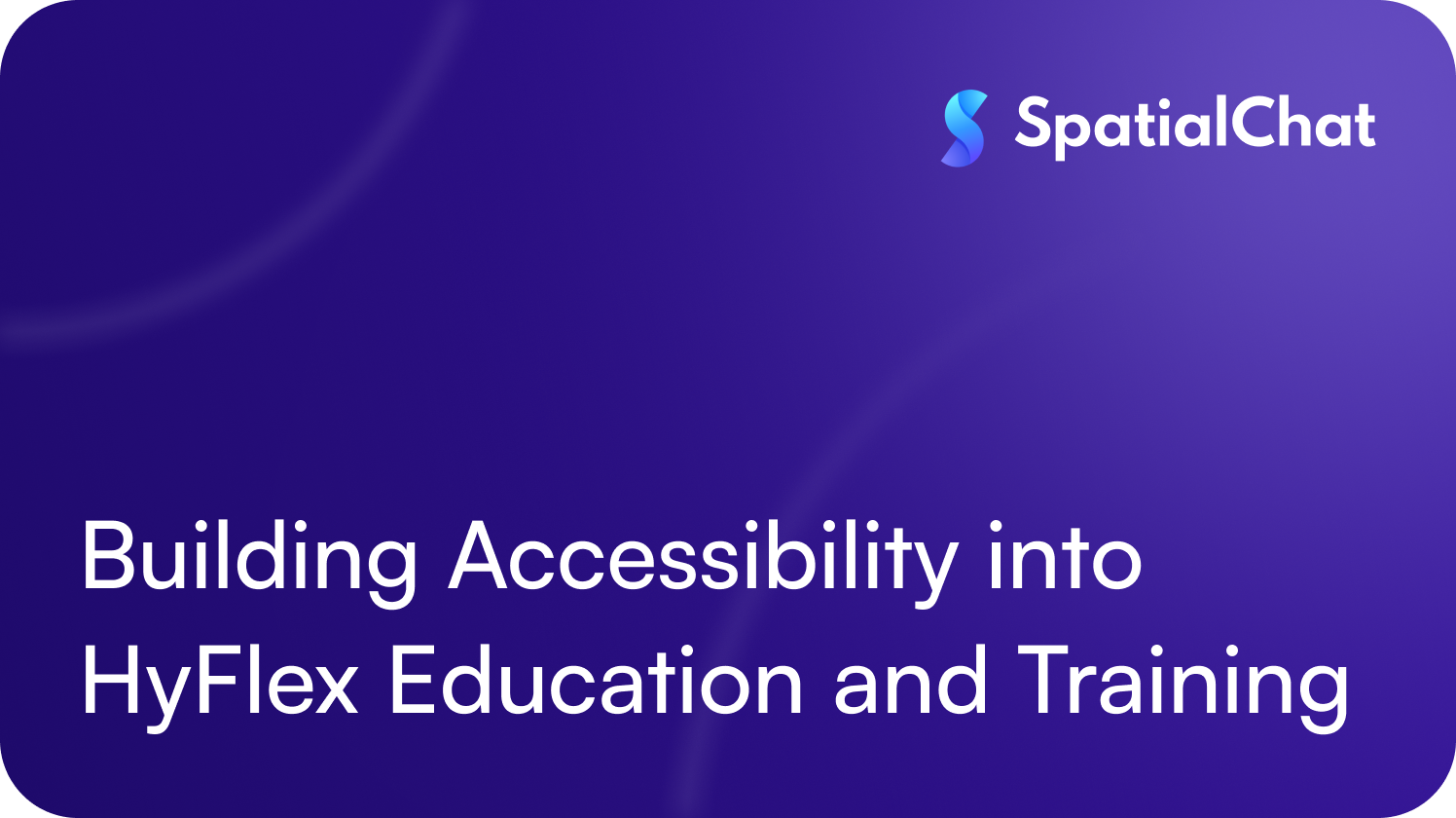In a HyFlex environment, changing the way the world learns starts with ensuring that every learner, regardless of ability or circumstance, has an equal opportunity to succeed. Whether in higher education or corporate training, accessibility isn’t just a compliance requirement; it’s the foundation of an inclusive learning experience. That’s why HyFlex models are designed to make education and professional development accessible in both physical and virtual spaces.
HyFlex learning combines in-person, live online, and on-demand participation, giving individuals the flexibility to choose how and when they engage. But for this flexibility to truly serve all learners, the environment must be intentionally designed to accommodate diverse needs and remove participation barriers.
In this article, we’ll explore what accessibility means within the HyFlex model, the unique challenges of traditional in-person learning for individuals with disabilities, and best practices for designing inclusive HyFlex classrooms. We’ll also highlight how platforms like SpatialChat can play a key role in supporting accessibility across both educational and professional training contexts.
Defining Accessibility and Why It Matters in HyFlex Learning
Accessibility in HyFlex learning ensures that individuals with a range of needs, including visual, auditory, motor, cognitive, and physical disabilities, can fully participate whether they are in the room, joining live online, or accessing recordings later. According to the National Center for Education (NCE), roughly 15% of K-12 students in U.S. public schools receive special education services. In higher education, 19% of undergraduates and 12% of graduate students report having disabilities. In the corporate world, many employees also require accommodations to learn effectively and advance professionally.
In the HyFlex model, accessibility means embedding inclusive design principles across all modes of delivery, so learners can engage, collaborate, and progress seamlessly no matter which participation option they choose.
Barriers Learners With Disabilities Face in Traditional In-Person Education
While HyFlex addresses many accessibility gaps, traditional in-person models often create barriers such as:
- Physical barriers: Buildings and classrooms without adequate ramps, elevators, or adaptable seating can restrict mobility for learners with physical impairments.
- Communication barriers: Without assistive tools like captions, live transcription, or sign language interpretation, deaf or hard-of-hearing learners may be excluded from discussions.
- Rigid schedules: Fixed class or training times can disadvantage those who need a more flexible pace or asynchronous access.
- Inaccessible materials: Printed handouts or non-digital resources can limit engagement for learners who use screen readers or require alternative formats.
By integrating accessibility into every delivery mode, HyFlex learning creates a more inclusive experience, ensuring that flexibility doesn’t just mean choice, but also equity.
How SpatialChat Powers an Accessible HyFlex Experience
At SpatialChat, accessibility isn’t an afterthought—it’s embedded into the platform’s design. Our features are built to ensure that learners of all abilities can participate fully, whether they’re in a physical classroom, joining online in real time, or engaging asynchronously later. From education to corporate training, SpatialChat helps create a seamless and inclusive HyFlex experience.
With SpatialChat, you can expect a platform that actively removes barriers and promotes accessible learning and development.
Closed Captions
SpatialChat offers real-time text transcription for all conversations, ensuring that no one misses critical information. Users can choose between:
- Automatically generated captions
- Manual captions
Participants can toggle captions on or off, enabling deaf or hard-of-hearing learners to fully engage. Captions are also helpful for those with temporary hearing impairments, non-native speakers, or learners studying in noisy environments. In HyFlex settings, this ensures accessibility no matter where or how participants join.
Interactive Notes
SpatialChat takes live transcription a step further with interactive notes. Learners will be able to highlight key moments from the transcript, add personal annotations, and review them later. This feature supports individuals who process information better in writing or need help recalling essential details, bridging the gap between live sessions and follow-up study.
Screen Reader Compatibility
SpatialChat is fully compatible with screen readers, enabling visually impaired learners to navigate and interact through audio and keyboard controls. Accessibility features include:
- Reading on-screen text aloud
- Audio feedback when interacting with buttons, links, or menus
- Alt text for describing images to screen readers
Keyboard Navigability
For those who cannot use a mouse or touchpad, SpatialChat is fully keyboard-navigable. Built-in shortcuts make it easier to move around the platform quickly and efficiently, ensuring that all learners, regardless of mobility limitations, can engage with content and participate in discussions.
By combining these accessibility features with the flexibility of the HyFlex model, SpatialChat ensures that inclusivity isn’t dependent on location, schedule, or device—it’s built into the learning experience from the start.
Inclusive Teaching Strategies for HyFlex Classrooms
While technology is critical, effective teaching strategies are just as important in making HyFlex learning inclusive for all. Research and practice highlight three core approaches that benefit learners with diverse needs:
- Collaboration: Encourage meaningful interaction between in-person and online participants, as well as with instructors and facilitators. This builds engagement, fosters peer support, and helps bridge the physical–digital gap.
- Personalization: Offer multiple ways to access and interact with content, such as live participation, recorded sessions, varied assessment methods, and device-agnostic access, so learners can choose what works best for their circumstances.
- Authenticity: Design learning experiences that connect to learners’ real-world backgrounds, professional contexts, and cultural perspectives. This enhances both relevance and retention.
Shaping the Future of Accessible HyFlex Learning
At SpatialChat, accessibility is not a one-time effort but an ongoing commitment. Our design system emphasizes usability and adaptability, and we continuously refine our platform based on feedback from educators, trainers, and learners.
In both education and corporate training, accessibility is essential to achieving equity. By embedding accessibility into both the technology and the pedagogy of HyFlex learning, and by providing resources, training, and continuous support, organizations can empower every learner to succeed, regardless of ability or location.
For more details on SpatialChat’s commitment to accessibility, book a demo now!
